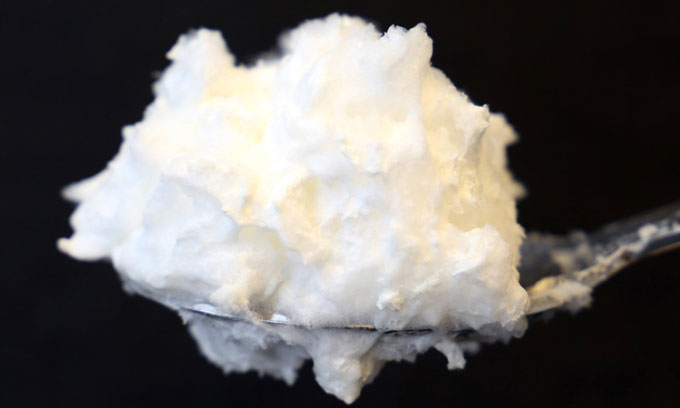Scientists Alter Fungal Genes to Produce Egg White Protein with Similar Whipped Texture.
Egg white powder is widely used as an ingredient in the food industry due to its high-quality protein content. In 2020, global egg protein consumption was approximately 1.6 million tons, and the market is expected to expand further in the coming years.

Fungal ovalbumin has a whipped texture similar to egg white powder. (Photo: VTT Technical Research Centre of Finland)
The increasing demand raises concerns about sustainability and ethics. Certain stages in the egg white powder production chain, such as raising laying hens, generate significant greenhouse gas emissions and contribute to water scarcity, biodiversity loss, and deforestation. Additionally, concentrated poultry farms have become reservoirs for pathogens, leading to outbreaks of zoonotic diseases.
However, a potentially “greener” alternative may soon emerge thanks to a fungus capable of producing key proteins found in egg whites, as reported by New Atlas on January 7. Scientists at the University of Helsinki and the VTT Technical Research Centre of Finland have genetically modified the fungus Trichoderma reesei to produce ovalbumin, which constitutes over half of the protein content in egg white powder. The new research has been published in the journal Nature Food.
The research team isolated the gene responsible for ovalbumin production in chickens, introduced this gene into the fungus, harvested the secreted protein, and then concentrated and dried it into powder form. Upon testing, this powder exhibited desirable properties similar to egg white powder, such as whipped texture.
Moreover, experts assert that compared to traditional egg white production methods, producing ovalbumin from fungi reduces land use by nearly 90% and lowers greenhouse gas emissions by 31% to 55%. Although the exact energy requirements for producing egg white protein using this new method have yet to be determined, the research team believes it will be significantly less than that of poultry farms. If clean energy sources are utilized, they estimate a potential reduction of up to 72% in greenhouse gas emissions.


















































